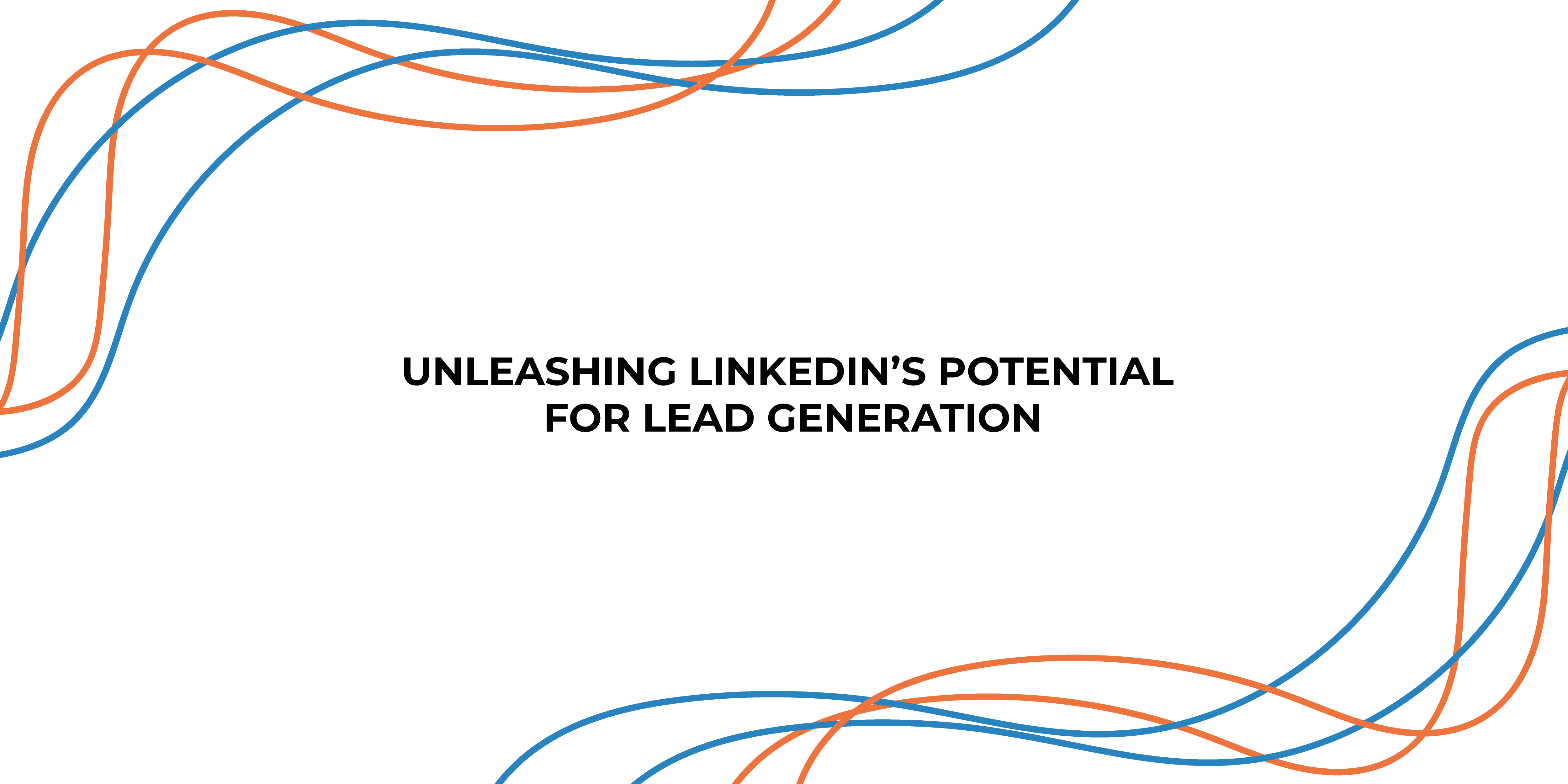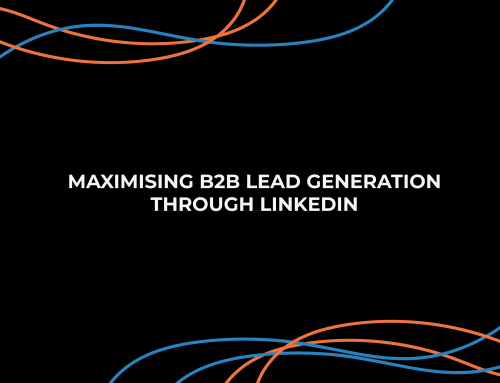LinkedIn is no longer just a platform for professional networking. It has become a powerful tool for businesses to generate leads and expand their client base. With over 1 billion users from 200 countries and regions worldwide, LinkedIn provides a unique chance to connect with professionals, decision-makers, and potential clients in your industry.
Today’s blog post will focus on maximising LinkedIn’s potential for lead generation by discussing strategies and best practices.
1. Optimising Your LinkedIn Profile
It all starts with your LinkedIn profile. Just like a physical business card, your profile is often the first point of contact between you and potential employers, clients, partners, or colleagues. To make a lasting and positive first impression in this digital age, it’s important to have a well-optimised LinkedIn profile.
Begin by making sure that your profile is complete. This means filling out all the necessary sections, including your name, headline, summary, experience, education, skills, and any additional sections that may be relevant, such as certifications, volunteer work, or publications. A complete profile not only looks more professional but also provides a comprehensive overview of your qualifications and experiences.
Write a compelling headline that communicates your unique value proposition. Instead of simply listing your job title, consider incorporating keywords relevant to your industry and adding a brief statement about your expertise or what sets you apart. A well-written headline can pique the interest of those who come across your profile.
Then, move on to the summary and experience sections to highlight your skills, experiences, and achievements. Write a compelling summary that gives readers a sense of who you are professionally and what you bring to the table. In your experience section, use bullet points to describe your roles and responsibilities, focusing on quantifiable achievements and results whenever possible.
Don’t go forgetting about your profile picture; this is the first visual impression you make on others. Choose a high-quality, professional-looking photo where you appear approachable and well-groomed. Avoid using casual or overly edited photos. Dress appropriately for your industry, and make sure your face is well-lit and in focus.
Once your profile is set up, don’t just forget about it. Remember to engage with your network by sharing relevant content, participating in discussions, and connecting with new contacts regularly. This activity not only keeps your profile active but also showcases your knowledge and expertise to your connections.
2. Build Your LinkedIn Network
Building a meaningful and effective network on LinkedIn is not just about accumulating a large number of connections. The quality of your LinkedIn network holds far greater significance in terms of achieving your professional goals.
Connecting with professionals in your industry is crucial because it allows you to stay updated on the latest trends, news, and developments. These connections can provide valuable insights, share industry-specific knowledge, and even become potential collaborators or mentors. By connecting with potential clients or partners, you can expand your reach and create opportunities for collaboration. Building relationships with these individuals can lead to new business ventures, partnerships, and client acquisitions.
Sending personalised connection requests is a crucial step in building a meaningful network. Instead of using generic messages, take the time to explain why you want to connect with a particular person. Mention shared interests, mutual connections, or common goals. Personalisation demonstrates your genuine interest in the individual and increases the likelihood of your request being accepted.
When connecting with someone on LinkedIn, always consider how the connection can be mutually beneficial. Think about what you can offer to the person you’re connecting with and what you hope to gain from the connection. It’s essential to approach networking with a mindset of reciprocity, where both parties stand to gain value from the relationship.
Building a quality network doesn’t end with the initial connection. It requires ongoing engagement and relationship nurturing. Interact with your connections by commenting on their posts, sharing valuable content, and sending occasional messages to check in or offer assistance. Consistent engagement helps strengthen your connections over time.
3. Creating Engaging Content for LinkedIn
Establishing yourself as an industry thought leader on LinkedIn is a strategic move that can greatly benefit your professional reputation and career growth. Sharing relevant and valuable content consistently is a powerful way to achieve this goal.
LinkedIn’s algorithm rewards users who post engaging and consistent content. This means that when you share valuable content regularly, your posts are more likely to be featured in your network’s newsfeeds and gain greater visibility. This increased exposure can lead to more profile views, connection requests, and engagement with your content.
Use various content formats to keep your audience engaged and interested. Mix text-based posts, articles, images, and videos to create a diverse content strategy. Different people prefer consuming content differently, so offering a range of formats ensures you reach a broader audience. For example:
- Text Posts: Share short, insightful tips, thoughts, or questions related to your industry. These can be quick and easy to digest.
- Articles: Write longer-form articles to explore complex topics or provide in-depth analysis. Articles showcase your expertise and allow you to demonstrate thought leadership.
- Images and Infographics: Visual content can convey information quickly and attract attention. Use images and infographics to illustrate key points or statistics related to your industry.
- Videos: Videos are increasingly popular on LinkedIn. Create short videos where you discuss industry trends, offer advice, or share your experiences. Video content often receives high engagement.
Consistency is key when it comes to content sharing. Establish a posting schedule that works for you and stick to it. Whether you choose to post daily, weekly, or on another schedule, ensure that your audience knows when to expect new content from you. Regular posting not only keeps your audience engaged but also signals to LinkedIn’s algorithm that you are an active and valuable user.
After posting content, be actively engaged with your audience. Respond to comments and messages promptly and encourage discussions and conversations around your content. Thought leaders are not just content creators but also active participants in meaningful conversations.
4. Using LinkedIn’s Advanced Search Features
LinkedIn offers an impressive set of advanced search features that can be immensely helpful for professionals seeking to find potential leads, clients, partners, or connections efficiently and effectively.
One of the most basic yet powerful filters is location. Whether you are looking for potential leads in your local area or trying to expand your reach to other regions or countries, LinkedIn allows you to specify locations in your search. This feature is particularly useful for businesses with regional or global clientele.
LinkedIn allows you to filter your search results by industry, profession, and company size. This is valuable for targeting prospects within specific sectors relevant to your products or services. For instance, if you offer technology solutions, you can focus your search on the technology industry to find potential clients or partners.
Job titles can provide valuable insights into an individual’s organisational role and responsibilities. You can use job title filters to identify decision-makers, key influencers, or individuals who are likely to be interested in your offerings. For example, if you are selling marketing services, you might target individuals with titles like “Marketing Director” or “Chief Marketing Officer.”
Meanwhile, depending on your business objectives, you may want to target small startups, mid-sized enterprises, or large corporations. LinkedIn’s company size filter allows you to specify the number of employees at a company, helping you find organisations that fit your ideal client profile.
LinkedIn also offers advanced search operators, similar to Boolean search, which enable you to combine keywords and phrases to refine your search even further. You can use operators like “AND,” “OR,” and “NOT” to create complex search queries. This is useful when you have specific criteria in mind, such as finding prospects with a combination of skills or interests.
LinkedIn offers premium subscription options that provide additional search capabilities, such as more detailed filters, expanded search results, and access to the full list of who viewed your profile. Depending on your lead generation needs, a premium subscription may well be worthwhile.
5. Use LinkedIn Advertising
LinkedIn Ads can be a valuable addition to your digital marketing and lead generation strategy, especially when you want to reach a specific audience, increase brand visibility, and engage with decision-makers in your industry.
- Sponsored Content: Sponsored content is a type of LinkedIn Ad that allows you to promote your posts to a broader and more targeted audience. You can boost the visibility of your thought leadership articles, product announcements, or other relevant content. You can define your target audience based on criteria like job title, company size, industry, location, and more. This precision ensures that the right people see your content. Sponsored content helps increase engagement metrics such as likes, comments, and shares. It’s an effective way to raise brand awareness and drive traffic to your website or landing pages.
- Sponsored InMail: Sponsored InMail allows you to send personalised messages directly to the LinkedIn inboxes of your target audience. This feature is particularly effective for B2B lead generation and relationship building. You can customise your InMail messages to address recipients by name and tailor the content to their specific interests or pain points. Sponsored InMail often includes a clear call to action, such as inviting recipients to download an e-book, request a demo, or attend a webinar.
- Display Ads: Display ads on LinkedIn appear on the right side of the desktop interface and can be used to promote your business, products, or services. Similar to sponsored content, display ads can be highly targeted based on demographics, job titles, company attributes, and more. These ads typically include images or graphics, making them visually engaging and potentially more attention-grabbing.
- Dynamic Ads: Dynamic ads are personalised and automatically generated ads that can appear in the LinkedIn feed and the right sidebar. These ads use the recipient’s profile information, such as their photo and name, to create a personalised experience, increasing the likelihood of engagement. Dynamic ads are often used for talent acquisition, personalised content recommendations, and promoting webinars or events.
- LinkedIn Lead Gen Forms: When running sponsored content or sponsored InMail campaigns, you can use LinkedIn Lead Gen Forms to capture leads directly on the platform. These forms pre-fill with a user’s LinkedIn profile information, making it easy for them to submit their details. Lead Gen Forms simplify the lead capture process, reducing friction for users and potentially increasing conversion rates.
LinkedIn provides robust tracking and analytics tools that allow you to measure the performance of your ads. You can track metrics such as click-through rates (CTR), conversion rates, and return on ad spend (ROAS). With access to this data, you can continuously refine your ad campaigns, adjusting targeting, ad copy, and visuals to improve results.
LinkedIn Ads also allows you to set a daily or total budget, giving you full control over your advertising spending. You can start with a modest budget and scale up as you see positive results.
Conclusion
LinkedIn has emerged as a powerful platform for lead generation, offering a unique opportunity to connect with professionals and decision-makers in your industry. By optimising your profile, building a targeted network, creating engaging content, utilising LinkedIn’s advanced search features, and using LinkedIn advertising, you can unleash the full potential of LinkedIn for your business.
Stay consistent, adapt your strategy based on analytics, and watch as your lead generation efforts flourish on this dynamic professional network.




